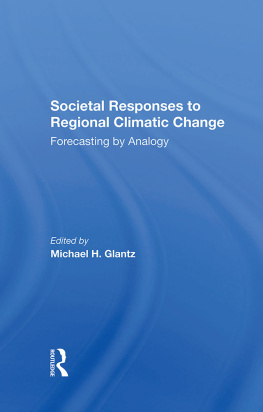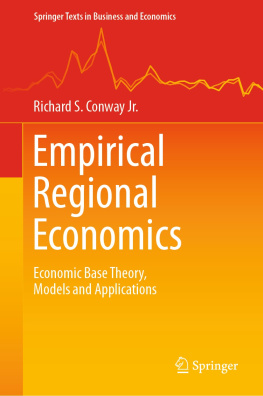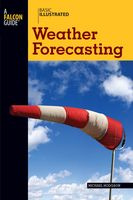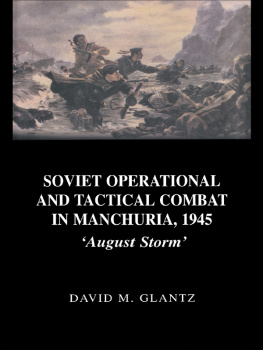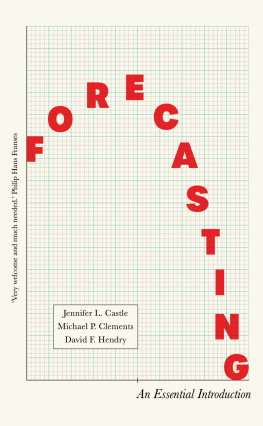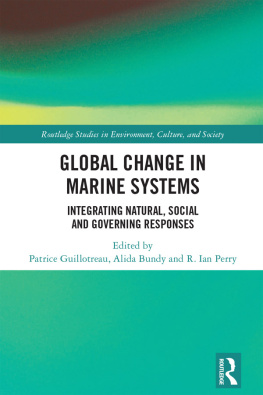Societal Responses to Regional Climatic Change
Published in cooperation with the Environmental and Societal Impacts Group, National Center for Atmospheric Research
Societal Responses to Regional Climatic Change
Forecasting by Analogy
Edited by
Michael H. Glantz
First published 1988 by Westview Press, Inc.
Published 2019 by Routledge
52 Vanderbilt Avenue, New York, NY 10017
2 Park Square, Milton Park, Abingdon, Oxon OX14 4RN
Routledge is an imprint of the Taylor & Francis Group, an informa business
Copyright 1988 Taylor & Francis
All rights reserved. No part of this book may be reprinted or reproduced or utilised in any form or by any electronic, mechanical, or other means, now known or hereafter invented, including photocopying and recording, or in any information storage or retrieval system, without permission in writing from the publishers.
Notice:
Product or corporate names may be trademarks or registered trademarks, and are used only for identification and explanation without intent to infringe.
Library of Congress Cataloging-in-Publication Data
Societal responses to regional climatic change.
(A Westview special study)
1. Climatic changesSocial aspectsNorth America. 2. Environmental impact analysisNorth America. I. Glantz, Michael H. II. Series.
QC981.8.C5S634 1988 304.2'5'097 88-10732
ISBN 13: 978-0-367-28780-1 (hbk)
This book is dedicated to two scientists whose careers have been devoted to an improved understanding of atmospheric processes for the benefit of humanity.
William W. Kellogg
National Center for
Atmospheric Research,
Boulder, Colorado
Gordon McKay
Atmospheric
Environment Service,
Downsview, Ontario
Contents
Michael H. Glantz
William W. Kellogg
Michael H. Glantz
Dale Jamieson
Richard W. Katz
Michael H. Glantz and Jesse H. Ausubel
Stewart J. Cohen
Peter M. Morrisette
Margaret A. Davidson and T. W. Kana
Mark Meo
William Koellner
Barbara G. Brown
Peter H. Gleick
Daniel P. Sheer
Donald A. Wilhite
Kathleen A. Miller
Michael H. Glantz
I would like to acknowledge the strong and constant support of the U.S. Environmental Protection Agency, specifically the support of Dennis Tirpak and Joel Smith in the Office of Policy Analysis. I would also like to thank Barbara Brown, Jan Stewart, and Regina Gregory for the excellent work they have done in the coordination and preparation of this manuscript. Special thanks go to Maria Krenz for her tireless efforts of support for this entire research activity, including this publication. I also wish to acknowledge the interest and cooperation of the participants of the workshop (held in Boulder, Colorado, in late June 1987) and the contributors to this publication. The constant support of the National Center for Atmospheric Research is gratefully acknowledged. NCAR is operated by the University Corporation for Atmospheric Research under sponsorship of the National Science Foundation.
The views expressed in these chapters are those of the individual contributors and do not necessarily reflect the view of the supporting organizations.
Michael H. Glantz
1
Introduction
Michael H. Glantz
The summer of 1988 will be a memorable one in the annals of American agricultural history. Persistent severe drought conditions plagued many parts of the North American continent. In addition to the lack of moisture for agricultural, municipal, and industrial purposes, temperatures were excessively high for protracted periods of time, with many new records being set in various parts of the continent. Corn production was drastically reduced in the eastern parts of the Great Plains. Farmers in the Great Lakes region who supplied hay to cattle owners in the southeastern United States a few years ago were now recipients of hay from those they had once helped. Water rationing was put into effect in parts of California. Climate has surely been on the minds of policymakers as special meetings were convened to discuss the economic and environmental impacts of droughts and high temperatures and as President Reagan visited some of the drought-affected areas declaring his support for a bipartisan multibillion-dollar drought relief package.
Perhaps the catalyst to political action was not so much the drought's impacts on agriculture but its impacts on navigation. For the first time in several decades extremely low flow conditions in the Mississippi River system brought barge traffic to a halt. Dredging operations were expanded and accelerated in order to try to keep river channels open. Requests were made for water releases from Lake Michigan in order to keep river traffic moving on the Mississippi. This request resurrected domestic as well as international political concerns about the allocation of the water resources of the Great Lakes between nations, states, and between competing uses.
Adding to the political concerns about the impacts of climate on environment and society were statements by prominent scientists about the implications of these droughts for the future. James Hansen, scientist at the Goddard Institute for Space Studies (GISS), noted that based on his assessment of global temperature records, 198S would prove to have been the warmest year on record and that the three other record-setting warmest years also occurred in the 1980s. He suggested that this was proof positive that the carbon dioxide/trace-gases-induced global warming, referred to as the greenhouse effect, was already in progress and that societies everywhere were seeing the first signs (i.e., impacts) of such a warming.
Whether these droughts and high temperatures are the first signs of the manifestations of a global warming is of less concern at this moment than the need to improve our understanding of the interrelationships between climate and society. Climate is, in fact, always changing. Societies are also undergoing constant change. It is important to know how well societies cope with climate variability today so that we can be better prepared to cope with climate variability and climate change in the future.
This volume is an outgrowth of a project undertaken by the Environmental and Societal Impacts Group (ESIG) at the National Center for Atmospheric Research (NCAR) for the U.S. Environmental Protection Agency's Office of Policy Analysis in order to identify societal responses to extreme climate-related events in North America. The project is based on the premise that in order to know how well society might prepare itself for a future change in climate (the characteristics of which we do not yet know), we must identify how well society today can cope with climate variability and its societal and environmental impacts. It is also based on the premise that while the climate of the future may not be like the climate of the present, societal responses to climate change in the near future will most likely be like those of the recent past and the present.

